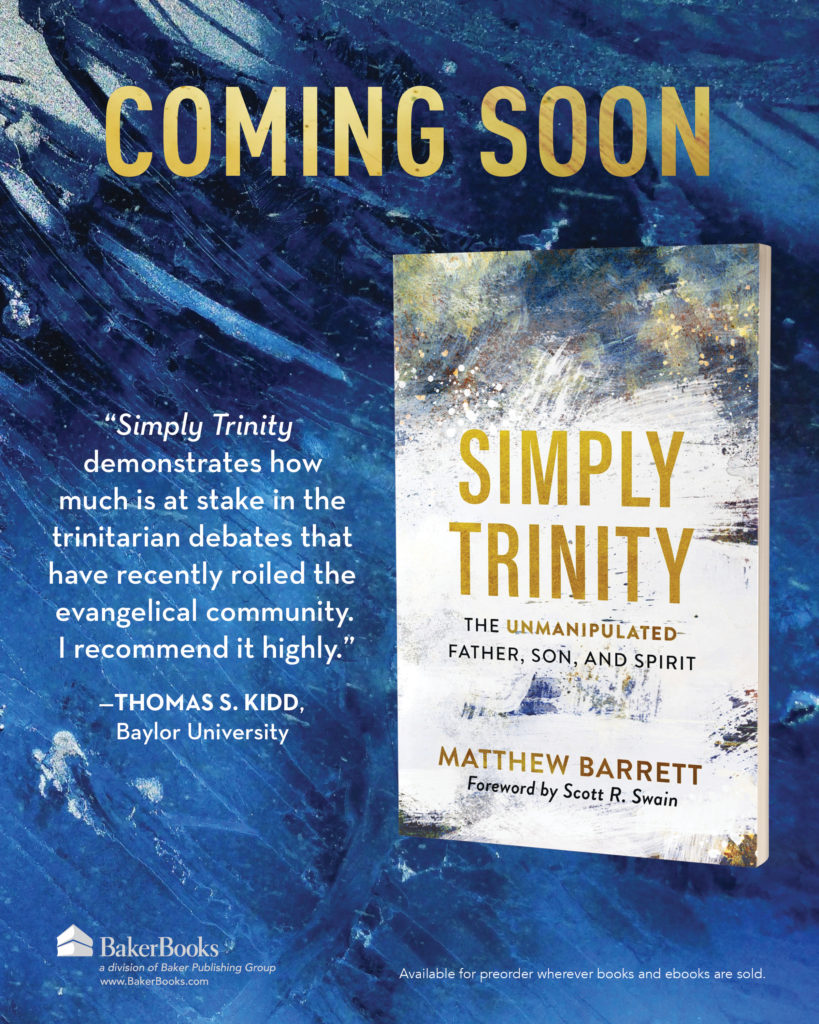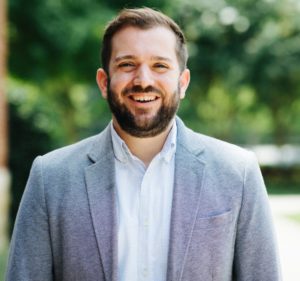
Timothy George: Reformation Theologian and Churchly Theologian
Timothy George is a churchly theologian because the marks of the church are the marks of his theology. The four notae ecclesiae found in the Nicene Creed best summarize George’s understanding of historical theology and his work as a reformational theologian. These words are also known as the four marks of the church. The Nicene Creed confesses our belief “in one, holy, catholic, and apostolic Church.” These four marks characterize George’s approach to historical theology, and they are necessary to understand his service to the church as a reformational theologian.
To borrow imagery from C.S. Lewis’s The Lion, The Witch and the Wardrobe, George’s perspective as a historical theologian is the wardrobe that we can walk through to get to Narnia, an exciting new place where we discover the wonderful works of Augustine, Aquinas, Calvin, Luther, Wesley, and many others. Many are transported by George’s works such as Theology of the Reformers, Reading Scripture with the Reformers, and through his work as the General Editor of the Reformation Commentary Series.

George’s work targets the period of the Reformation but the impact of his work results in opening our eyes to the wider church. George’s area of research and specialty, his “interest in the Reformation was always in service to a wider concern, namely, to understand the reformers as they saw themselves: faithful servants of Jesus Christ in the one, holy, catholic, and apostolic church.” David Dockery also sees these traits as the marks of Christians because we “are called to exemplify love and truth, oneness and holiness, catholicity and apostolicity.” Thus, these marks epitomize George’s approach to historical theology and his work as a reformational theologian.
Timothy George carries on the charge of his mentor, the great Reformation scholar George Huntston Williams: “The two parts of the creed that the church historian is to make meaningful are Una Sancta, the one, holy, catholic, and apostolic church; and Communio Sanctorum, the church as the communion of saints.”
Oneness: An Ecumenism of Conviction
The scope of historical theology should be the one church, rather than a single denomination or sect. In other words, historical theology should be ecumenical historiography at its best. Timothy George’s commitment to this type of ecumenism began with his mentor George Huntston Williams and was modeled by Jaroslav Pelikan.
George clarifies his approach to ecumenism: “I believe in an ecumenism of conviction, not an ecumenism of accommodation. We do not advance the cause of Christian unity by abandoning our biblical understanding of the church. But how do we hold these together?” In light of this tension between conviction and unity, George offers three ways to move forward. George’s perspective as a historical theologian is the wardrobe that we can walk through to get to Narnia, an exciting new place where we discover the wonderful works of Augustine, Aquinas, Calvin, Luther, Wesley, and many others. Share on X
First, Christians should “recognize the centrality of Jesus Christ. The closer we come to Jesus Christ, the closer we come to one another as brothers and sisters in him.” Second, Christians should study the Bible together. George explains, “The Bible belongs to the whole people of God, not just to one denomination or church tradition. We can clarify differences and find a deeper unity by going deeper into the Scriptures.” Third, Christians should pray together. George writes, “Jesus prayed to his heavenly Father (John 17:21) that his disciples would be one so that the world might believe. We can join our prayer to the prayer of Jesus and in so doing become a part of its fulfillment.”
George claims that a theologian for the church must be a theologian for the whole church. He said, “An ecclesial theologian must also be an ecumenical theologian — ecumenical in the sound, orthodox sense of that word.” George explains, “That means, a pastor theologian is concerned with the entire people of God through the ages and also with the missio Dei throughout the entire oikoumenc today, that is, the whole inhabited world (Luke 2:1).”
George clarifies the relationship between the community of faith from which the theologian stands and the wider community of faith. He says, “Such pastors honor and cherish the discrete traditions from which they come, but they also know themselves to belong to the one, holy, catholic, and apostolic church, which is the Body of Christ extended throughout time as well as space.” Therefore, he argues, “Theology that is truly biblical and evangelical is done for, with, and in the context of this enlarged Ecclesia for which Christ died.”
George uses the metaphor of gift-exchange to best understand the relationship between his particular community of faith and the wider community of faith: for example, “Baptists have special gifts to offer the wider Body of Christ and also lots to learn from our fellow Christians.”
Holiness: Retrieval for the Sake of Renewal
The goal of Timothy George’s work as a reformational theologian is the progressive holiness of the church. Historical theology contributes to the holiness of the church through its project of retrieval for the sake of renewal. Thus, George carries on David Steinmetz’s quest to free the church from amnesia.
George diagnoses the spiritual problems facing the church today: “The two major diseases of the contemporary church are spiritual amnesia (we have forgotten who we are) and ecclesiastical myopia (whoever we are, we are glad we are not like ‘them’). While these maladies are not unique to the people of God called Baptists, they are perhaps most glaringly present among us.”
George recalls when his love for teaching church history and theology began while at the Southern Baptist Theological Seminary: “I found that students knew little, if anything, about those pioneers of the past, and I wanted to encourage a program of réssourcement—not a return to ‘the good old days’ but an appropriation of the warranted wisdom and spiritual insight they can offer to the church today.” George’s purpose in recalling the history of God’s people is to renew the holiness of God’s people in the present.
Catholicity: Christian Doctrine
The two major diseases of the contemporary church are spiritual amnesia (we have forgotten who we are) and ecclesiastical myopia (whoever we are, we are glad we are not like ‘them’). Share on X George believes that the context of historical theology is an expression of catholicity by learning from the grand scope of the Christian tradition. This has been best exemplified by the five-volume work The Christian Tradition by Jaroslav Pelikan. There have been recent discussions within different denominations on how each can best pursue catholicity. Mark Dever offers help by making the observation that church catholicity “came to be used synonymously with ‘orthodox’.”
George defines the church as “the body of Christ extended throughout time as well as space. It encompasses all of the redeemed of all of the ages.” C. S. Lewis compared the Church catholic as a hall and church traditions as rooms. He illustrated the Church catholic as “a hall out of which doors open into several rooms. If I can bring anyone into that hall I shall have done what I attempted.” Lewis compared specific church traditions as rooms: “But it is in the rooms, not in the hall, that there are fires and chairs and meals. The hall is the place to wait in, a place from which to try the various doors, not a place to live in.” This illustration from Lewis captures George’s affirmation of both the catholic or universal Church and Church denominations.
Apostolicity: Biblical Exegesis
Historical theology is not a distraction from, but an aid to, the church’s apostolicity. The historical theologian should share a commitment to understand the content of the Apostolic teaching in God’s Word by engaging with the long exegetical tradition of the church. Timothy George carries on the work of David Steinmetz, who helped scholars “see the interpretive tradition of the church not as a problem to be overcome, but rather as an indispensable aid for rightly understanding the inspired Word.” George contributes to the church’s understanding of the exegetical tradition through his work Reading Scripture with the Reformers and through his role as the General Editor of the Reformation Commentary Series. He looks to the church in space and time to learn from its oneness (the unity of the church), holiness (the renewal of the church), catholicity (the whole tradition), and apostolicity (the basis of Scripture). Share on X
George defines apostolicity in Protestant and Baptist terms. He explains, “Baptists do not define apostolicity in terms of a literal lineal succession of duly ordained bishops who alone have authority to ordain other ministers. Instead, Baptists define apostolicity in terms of the primordial character of the gospel, the inscripturated witness of the apostles, and the succession of apostolic proclamation.”
George believes that contemporary Christians should read Scripture in community with “the fathers, the scholastics and the reformers.” He observes, however, a “dialectic of primitivism or presentism establishes two centers of scriptural engagement—the first Christian generation, which means the writings of the New Testament, and the most recent generations, notably my generation.” He warns, “This dichotomy governs the way Scripture is read in much of the Christian community today, both in liberal mainline churches and in conservative evangelical ones. There is, we might say, a presentist imperialism of the left and a presentist imperialism of the right.”
These four marks of ecclesiology summarize George’s approach to historical theology and his work as a reformational theologian. He looks to the church in space and time to learn from its oneness (the unity of the church), holiness (the renewal of the church), catholicity (the whole tradition), and apostolicity (the basis of Scripture).

